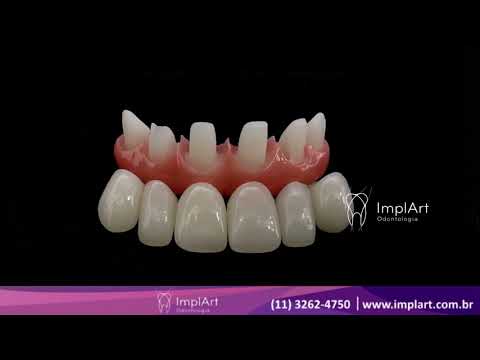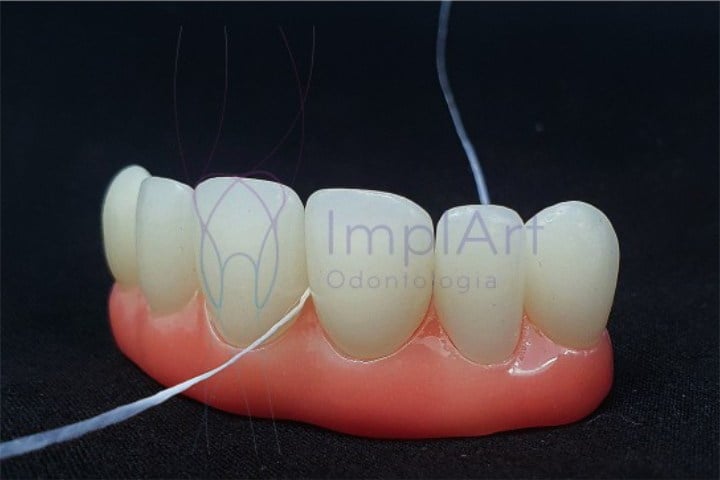
Implant all your teeth individually one-by-one with confidence
The main indication for implant treatment of all individual teeth is when the patient is close to losing all their teeth but has preserved bone.
Placing individual dental implants is an effective solution for restoring oral function and aesthetics. It also allows patients to regain the ability to chew and speak properly. It is important to note that the process of placing implants and individual teeth (one by one) requires detailed assessment and planning, taking into account the patient’s oral health and bone structure. It is therefore essential that a specialized professional carries out the procedure safely, to ensure the success of the treatment. There are currently several types of titanium implants to choose from, as well as zirconia implants.
Implantation of all the individual teeth is the technique that fixes a crown to each of the implants distributed throughout the arch.
However, this is a very advanced technique in implant dentistry and its indication and feasibility need to be examined by the implant dentist, who must determine whether the patient is a good candidate for implants of all the individual teeth. In principle, these are the basic requirements for implanting all individual teeth:
- Have abundant bone (no bone loss)
- Having a preserved amount of gum compared to natural teeth
- In an open smile, the patient cannot show the gums
In this technique, each missing tooth will be replaced with an implant post + an individual dental crown. However, this is only possible in certain cases, please contact us.

Because of the bone and gum loss that usually occurs as a result of tooth loss, the result of the gingival appearance of a dental implant treatment of all individualized teeth is different from that of a natural dentition, and also bolder.
The main change in the shape of the gums after losing a tooth is that the gums become flat, without the arches that characterize a natural set of teeth. However, if your smile is very open, it will be necessary to make a prosthesis with a layer of artificial gum to simulate the appearance of normal gums. Read more about gum characterization in dentures.
Frequently asked questions about dental implants one by one:
Can I do a bone or gum graft to increase the bone/gum volume first to allow for an implant of all the individual teeth?
Yes, but even if there is a volume gain in these tissues, the shape of the gums will not be the same as those of a natural set of teeth (arch shape). This is because in all cases of tooth extraction there is a small loss of volume in the bone in the area, which cannot be recovered even by performing a bone graft or gum graft.
Grafting in these cases will not recover all the lost gingival volume but will only allow implants to be placed. The rest of the lost tissue will need to be replaced with dental prostheses.

What are the contraindications to implanting all individual teeth?
- Very open smile that shows off the gums
- Bone loss in thickness or height, because the bone has to be perfect
- Regions with gum defects, as the gums must be perfect for the individualized implant.
- In these cases, the aesthetics of the teeth would not look good using implants one by one.
Considerations on implanting all individualized teeth – splendid results
Because of the bone loss that occurs as a result of losing teeth without immediate replacement, it is most common for patients not to be able to have all their individual teeth implanted. However, it is possible to use a fixed prosthesis with individual teeth, which gives excellent results: a total implant with fewer distributed implants and a full-arch fixed prosthesis.
Can people who have lost all their teeth get implants? What about the gums?
Dentures may or may not have a layer of gum to simulate the appearance of natural teeth. The gum is not designed to make the prosthesis look ugly. Many patients are reluctant to use artificial gums in their dentures, as they think they look like dentures.
However, with advances in the techniques and materials used, the artificial gingiva of the prosthesis is able to reproduce the aesthetics and naturalness of natural gingiva reliably. The types of total implant prostheses are:
- Acrylic resin (protocol prosthesis)
- Porcelain (internal metal structure and porcelain finish – ceramic protocol)
- Zirconia (internal structure in white metal-free zirconia, covered with porcelain – metal-free prosthesis)
- Translucent Pure Zirconia – fully computerized prosthesis with greater resistance and naturalness
- Immediate loading for the entire arch
- Fixed denture on 4 implants (all on 4)
If you have any questions about the value and price of a dental implant, the best treatment, please contact our team or schedule an appointment with our specialized team. We at the ImplArt dental clinic would be delighted to hear from you!
 Agende sua consulta agora por WhatsApp
Agende sua consulta agora por WhatsApp
Leave a Reply